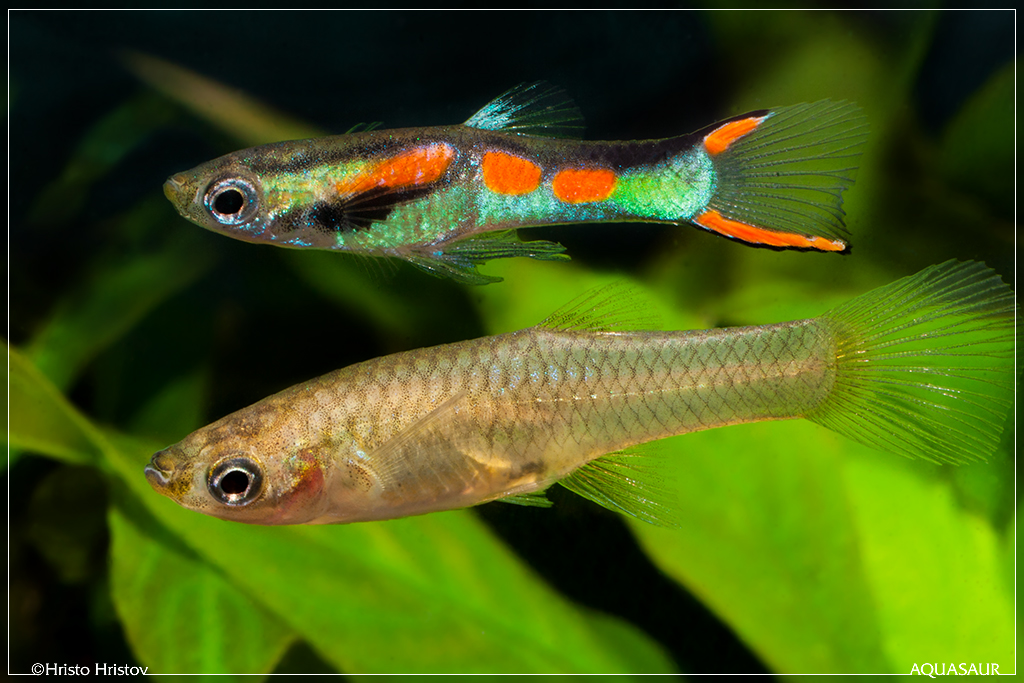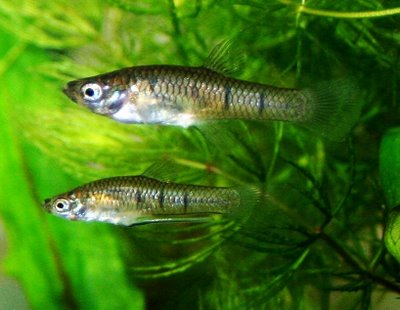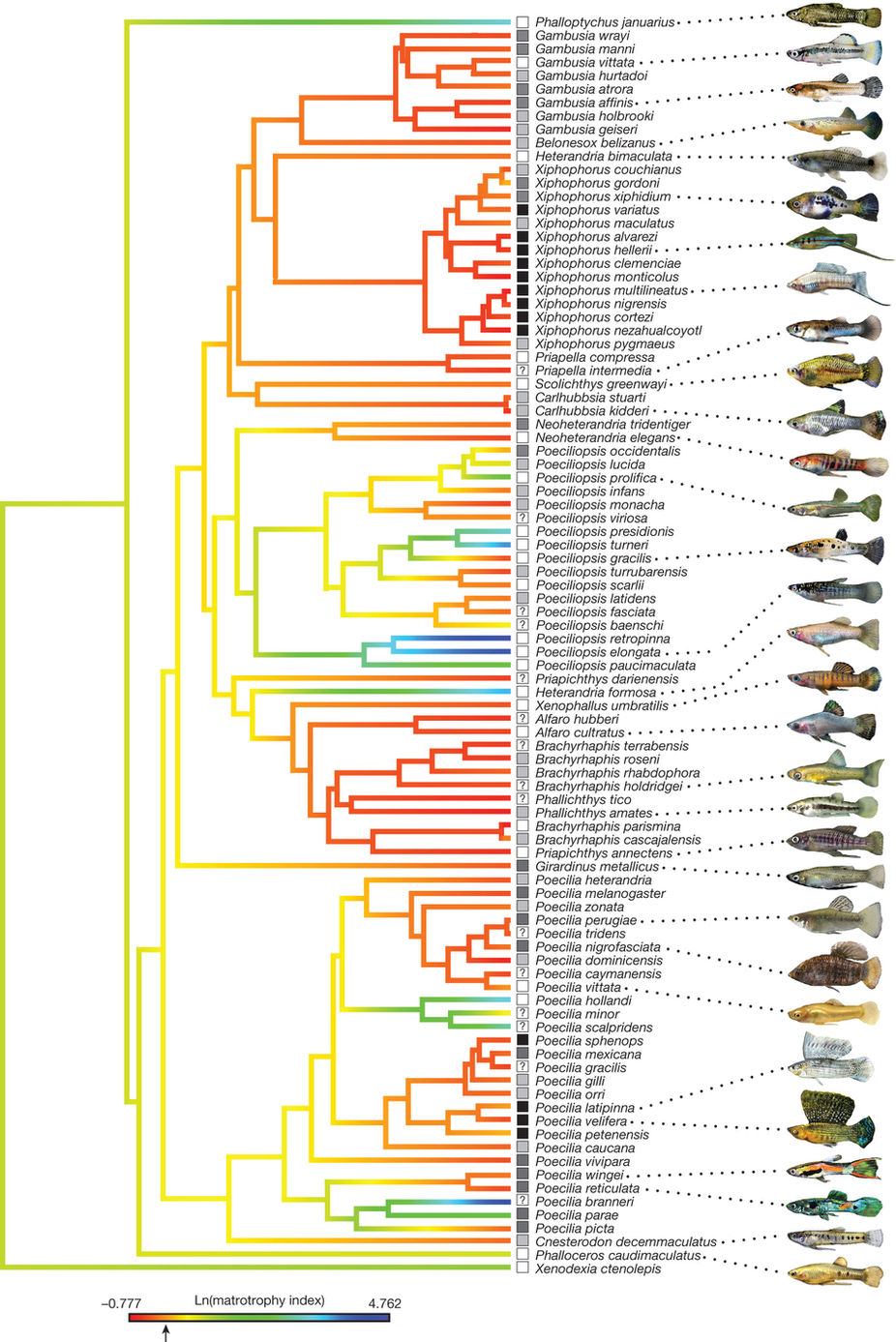The Evolution of Placentas in the Poeciliidae:
An empirical study of macroevolution
Key Publications can be found in the Publications Tab
|
From guppies, I have expanded to look at the life histories of fish in the same family, the Poeciliidae. When I began, the literature yielded decent life history descriptions for only 12 of an estimated 200 to 250 species, but these sparse data revealed remarkable diversity. All of these species, save one, bore live young, some species had the functional equivalent of a mammalian placenta and this trait had evolved independently more than once in the family. My collaborators and I have now described the life histories and mode of maternal provisioning in over 150 species, developed a well-resolved tree and mapped the life history characters on that tree. This work identifies nine independent origins of placentas and three clusters of closely related species that do or do not have placentas. We have also discovered species that differ up to 100 fold in the extent to which females provision developing young.
This diversity allows for empirical macroevolutionary comparisons among multiple sets of closely related species with and without placentas or with varying degrees of placentation. These comparisons can illuminate the causes of placental evolution and the consequences of having a placenta. Through a series of such experimental comparisons, we have tested and rejected every adaptive hypothesis offered for why placentas evolved. |
|
In the absence of strong support for adaptation, we have become interested in the concept of parent-offspring conflict as a primary cause of the evolution of increasingly complex placentas. Some of our results show that:
Our current focus is to characterize the relationships among the evolution of placentas, sexually selected traits, pre- and post-copulatory reproductive isolation, and how all of these factors relate to the rate of speciation. |
Río Piaxtla, Mexico



